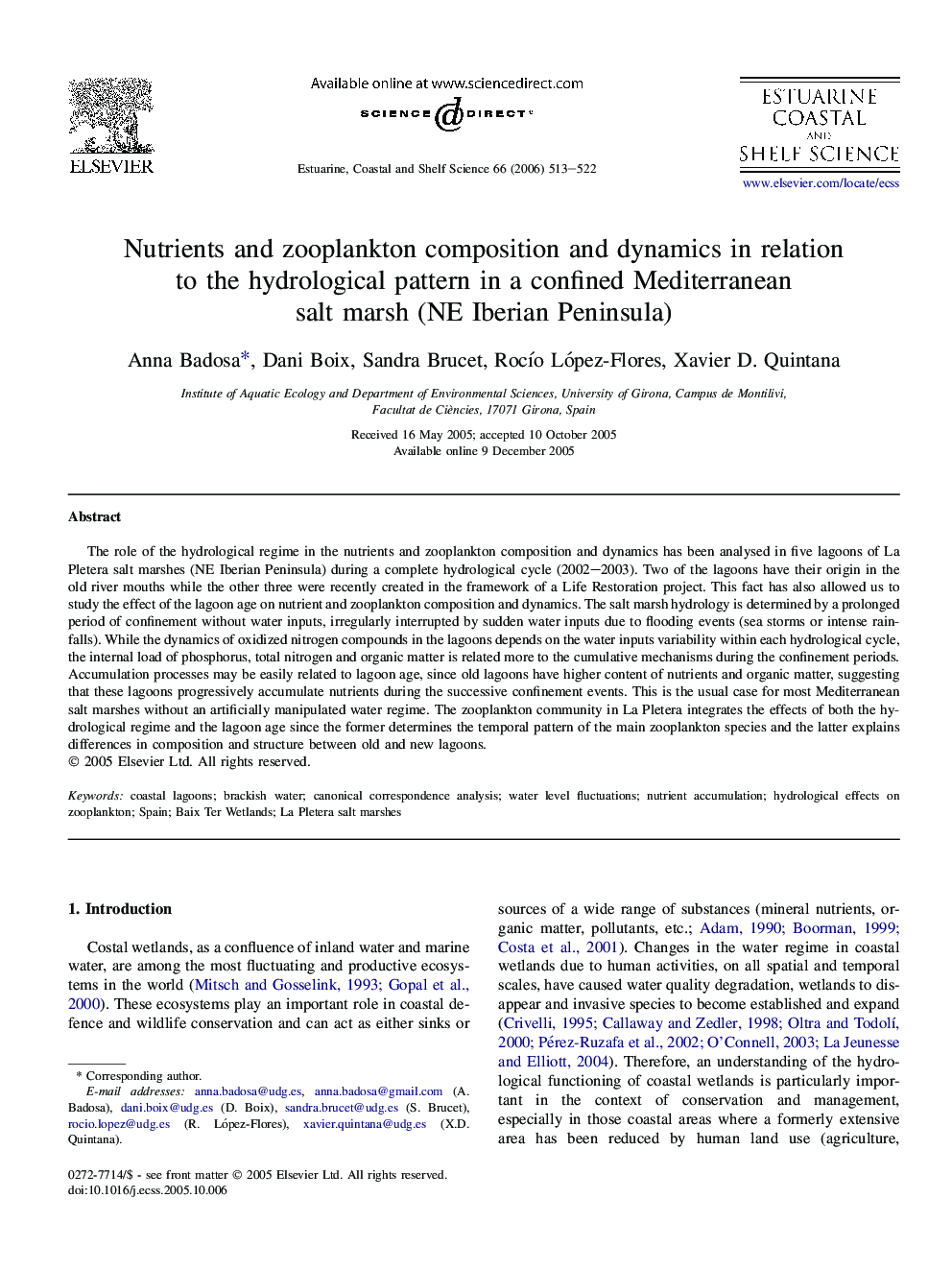| Article ID | Journal | Published Year | Pages | File Type |
|---|---|---|---|---|
| 4542539 | Estuarine, Coastal and Shelf Science | 2006 | 10 Pages |
The role of the hydrological regime in the nutrients and zooplankton composition and dynamics has been analysed in five lagoons of La Pletera salt marshes (NE Iberian Peninsula) during a complete hydrological cycle (2002–2003). Two of the lagoons have their origin in the old river mouths while the other three were recently created in the framework of a Life Restoration project. This fact has also allowed us to study the effect of the lagoon age on nutrient and zooplankton composition and dynamics. The salt marsh hydrology is determined by a prolonged period of confinement without water inputs, irregularly interrupted by sudden water inputs due to flooding events (sea storms or intense rainfalls). While the dynamics of oxidized nitrogen compounds in the lagoons depends on the water inputs variability within each hydrological cycle, the internal load of phosphorus, total nitrogen and organic matter is related more to the cumulative mechanisms during the confinement periods. Accumulation processes may be easily related to lagoon age, since old lagoons have higher content of nutrients and organic matter, suggesting that these lagoons progressively accumulate nutrients during the successive confinement events. This is the usual case for most Mediterranean salt marshes without an artificially manipulated water regime. The zooplankton community in La Pletera integrates the effects of both the hydrological regime and the lagoon age since the former determines the temporal pattern of the main zooplankton species and the latter explains differences in composition and structure between old and new lagoons.
